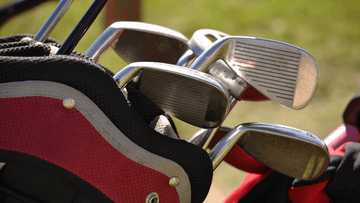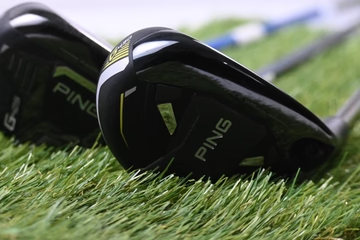Subscribe to our mailing list for insider news, product launches, and more.


What is the Moment of Inertia in golf clubs and how does it affect performance?
When you’re shopping for second hand golf clubs online, there’s a lot to consider. Of course, you’ll have your favourite, go-to golf brands to browse, but beyond that there is a whole host of technical specifications that are worth paying attention to. One of the biggest ones is the loft and lie of a club, and you’ll be glad to know that we’ve already covered that in plenty of detail in our essential guide to golf club loft and lie. Then, you’ll want to consider the shaft length and whether you need a right or a left-handed golf club.
BUT WHAT ELSE DO YOU NEED TO CONSIDER?
When golfers are analysing the tiny adjustments they can make to their selection of golf clubs, there are two details that are worth learning more about. One of them is the Centre of Gravity of the clubhead. And, you’ll be pleased to know that you can find out more about that in our article telling you everything you need to know about the Centre of Gravity (CG, or CoG) of a golf club.
The other detail to swot up on is the Moment of Inertia (MOI), and that’s what we’re focusing on in this article. Yes, it’s physics, but you’ll be amazed at how big a part that has to play in finessing your golf technique. We’ll call it MOI from now on…
Looking for a new putter? Browse our latest stock below.


Scotty Cameron Select Newport 2 2018 Putter / 34 Inch


Ping Karsten Zing USA Series Putter / 35.5 Inch


Scotty Cameron Teryllium T22 Newport II Putter / 35 Inch / Refurbished


Scotty Cameron Super Select Fastback 1.5 Putter / 35 Inch


Taylormade Spider GT Black Putter / 34 Inch


Ping Karsten BeCu Anser Putter / 36 Inch


Odyssey O-Works 1W Putter / 36 Inch


Odyssey White Hot Versa Double Wide Putter / 35 Inch
SO, WHAT IS MOI?!
In mechanical engineering, Collins Dictionary says, “The moment of inertia of the cross-section of a body is its resistance to changes in its rotation. It depends on how far each part of the body's mass is from its center.”
But we’re not mechanical engineers, we’re golfers, so let's look at what that means for us and our golf clubs in simpler terms. In golf, MOI refers to the golf club’s resistance to twisting when it hits the golf ball. The rule of thumb to remember is the higher the MOI, the more resistant it will be to twisting during a swing.
WHAT MOI SHOULD I LOOK FOR IN A GOLF CLUB?

WHAT MOI SHOULD I LOOK FOR IN A GOLF CLUB?
If you’re a relative beginner looking for stability and forgiveness, you’ll want to find a golf club with a higher MOI. If you’re a higher handicapper and all about workability and control, straightness and distance, then you need a lower MOI (but you’ll have to compromise on the amount of forgiveness it allows). MOI is increased in a golf club by distributing the weight around the edge of the clubhead.
As with all things in golf, it’s as much about trial and error as it is knowledge and technique, so the best way to find out what MOI is right for you is to experiment with a wide range of golf clubs.
MOI IN DIFFERENT TYPES OF GOLF CLUBS
Golf drivers are one of the most important clubs in your bag, designed for distance (and therefore more prone to mishits). So, you’re looking for a higher MOI here that can reduce any twist incurred by an off-centre shot. When it comes to irons, higher MOI models are usually cavity-backed with a distributed weight around the clubhead to give your club a bigger ‘sweet spot’ and improve the quality of your shot. As for putters, you may be surprised to learn that MOI is still important. Again, a higher MOI will give you more forgiveness and mallet putters are good for this because of their larger heads and perimeter weighting.
IN SUMMARY
We hope you’ve found our guide to Moment of Inertia (MOI) in golfing useful. Let us know if you have any questions!









